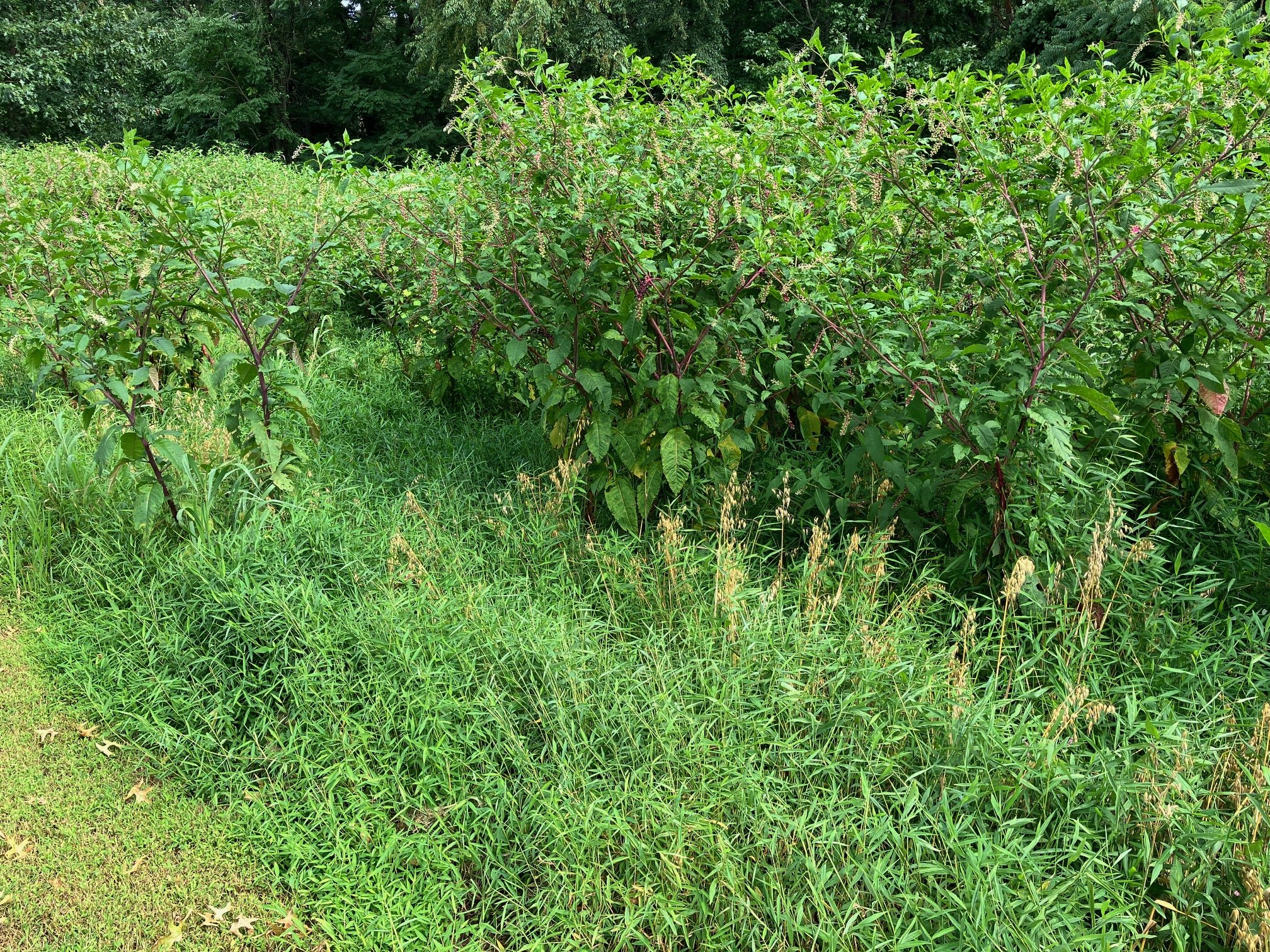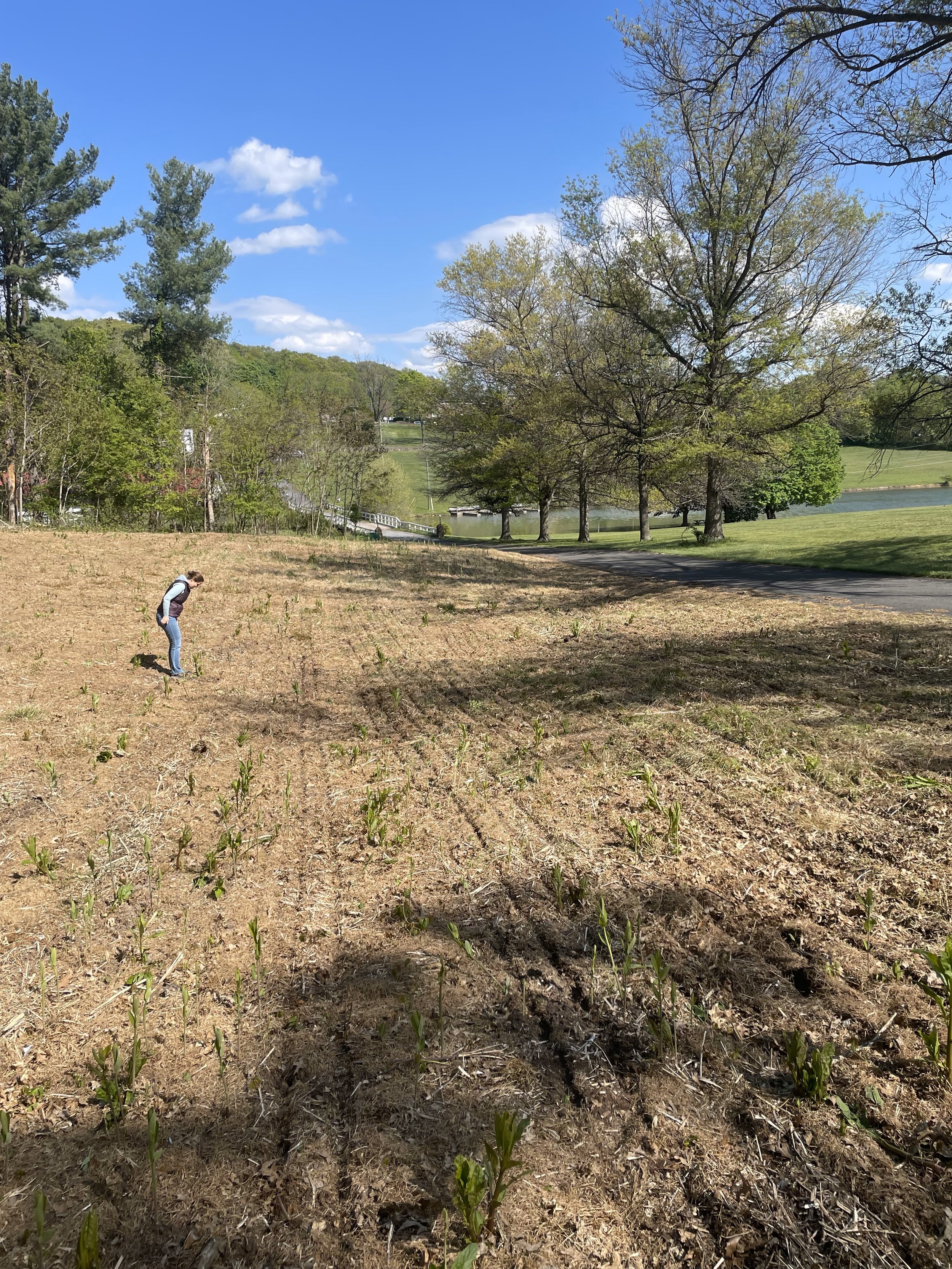Pollinator meadow
















Why are we establishing a pollinator meadow?
As a Presbyterian Church (USA)-affiliated camp and conference center, we believe in a Creator who calls on us to take good care of the creation around us. By establishing a field of diverse native plants and wildflowers, we’ll provide food and habitat for all manner of pollinator species, particularly in the midst of increased development in our part of Rockingham County. We recognize the interconnectedness of the planet around us, and are excited about the many ways a space like this can benefit not only the health of our site, but neighboring environments.
It’s our hope that by tending to this space, we’ll be able to demonstrate to our guests how they might do likewise. We hope to teach campers, conference participants, guest groups, and visitors alike to appreciate the diversity in and importance of nature.
We are grateful to Ginter Park Presbyterian Church in Richmond, VA for a gift from their endowment, Virginia Conservation Assistance Program (VCAP) for a grant, Shenandoah Valley Soil and Water Conservation District for guidance, and Shenandoah Habitats for technical assistance.
Learn more
Colleen Earp, our Program Director, is overseeing this project.
Reach her by email at colleen@massanettasprings.org or calling Massanetta Springs at 540-434-3829.
UPDATE 9/13/24
Well, the thistle won this season. Colleen met with staff from the local Soil and Water Conservation District to check on the project, and they reported that everyone is struggling with it this year. It’s a nonnative thistle that manages just fine through a drought. The eastern goldfinches are loving it, and we still spy a few of our native plants coming up through the forest of thistle. We’re consulting with our contractor and coming up with a plan for managing some of this mayhem in the spring. Till then, while it’s not the best food source or habitat, birds and insects don’t seem to mind visiting!
UPDATE 6/1/24
We aren’t seeing quite as much stiltgrass, but the thistle is… prolific. We continue our work caring for this space, and we know it matters! Some good bugs are hanging out here, and we’re seeing more and more good native wildflowers making their way. It’s a work in progress, for sure!
A honeybee came to visit our dogbane!
update 8/25/23
Despite our best efforts to thin the invasive stiltgrass, the best thing to do for this season was to cut the field low before it could go to seed. It’s sad to lose the flowers that were doing well, but we know this is one step of the process.
The pollinator meadow after several hours of bushhog work. Tough day, but not the end of the story!
update 8/18/23
About 20 volunteers came for two mornings through James Madison University’s Dukes Make a Difference serving learning program for incoming freshmen. They helped thin the pokeweed and pull the stiltgrass, revealing many native wildflowers and grasses! There is still a long way to go in clearing the invasive plants to make way for the pollinator habitat we are trying to establish, but we are feeling hope and gratitude for the hard work of the students.
Student volunteers from JMU’s Dukes Make a Difference program removing pokeweed and stiltgrass.
update 6/26/23
The plant enthusiasts among us may have noticed the significant growth of the highly invasive stiltgrass, as well as a few other aggressive species where we’d hoped to see flowers starting to bloom. We are in conversation with the Shenandoah Valley Soil and Water Conservation District as well as the contractor who helped prepare and install the wildflower seeds about next steps, which will be determined by how early or late the stiltgrass goes to seed. We are disappointed, as it was not a notable concern in the early surveys of the space. However, we are not giving up yet! This kind of project can take several years to really start thriving, and we will continue to collaborate with the conservation district and our contractor partners to manage this ecosystem.
Stiltgrass and Pokeweed have overrun our pollinator field, requiring a great deal of maintenance.
update 4/24/23
Today was seed drill day! Our partners at Shenandoah Habitats installed over 13 lbs of seeds, including over 50 species of wildflowers and grasses. We are so excited to watch this space grow up!
11/5/2021
Today was an important step in developing a pollinator meadow at Massanetta Springs: meeting with the local conservation district to learn more about programs that might support us doing this! We talked with a Conservation Technician and the District Conservationist from the Shenandoah Soil and Water Conservation District. Everyone is excited about the possibilities for developing this part of our site as a particularly beautiful way to live up to our mission to be a place for all people to experience God through renewal, discovery, and hospitality!





